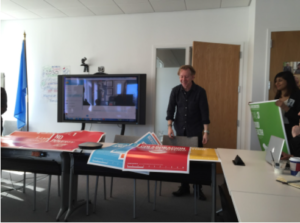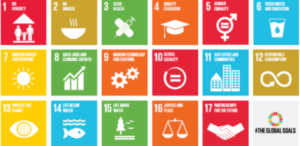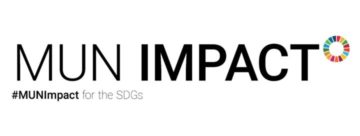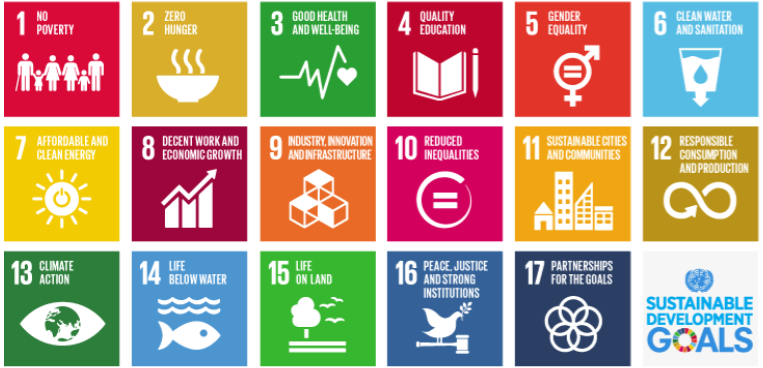By Sarah Cao
_
Natabara Rollosson, a name that all of us should know by now, has a diverse background, having worked for over seven different UN Agencies. Not only has he helped produce and direct an important and thought-provoking documentary such as Challenging Possibility (2011), he has also appeared in the documentary We Rise Up (2019). He is also the co-founder of Comics Uniting Nations, which is “a partnership of UNICEF, PCI Media, World’s Largest Lesson, PVBLIC Foundation and Reading with Pictures, to make the Sustainable Development Goals accessible to the citizens of the world through comics.” Rollosson’s role with the Sustainable Development Goals (SDGs) of the UN has extended past just Comics Uniting Nations, as he coordinated logistics for the High-Level Panel that developed the blueprint for the SDGs. He also was a member of the advisory committee that gave feedback on how to visually bring the SDGs to life.
Most of us have already seen the 17 SDGs and recognize the importance of them, as in Rollosson’s words, “The SDGs are the ultimate “to-do list” for the planet. They bring people together around common goals, giving people around the world a common language and set of targets and measurements.” These goals truly determine the future of the world and they highlight what we should all be fighting towards, with issues such as climate change, education, equality, and sanitation being amplified now more than ever. However, the SDGs are almost unrecognizable without the logos that come with them, and a lot of thought, creativity, and time went into designing them.


With famous designer Jakob Trollbäck leading the SDG logo design team, the advisory committee gave him feedback at different stages of the design. The goals had been previously established, but they needed visual icons to go with them. According to Rollosson, the challenge was “to bring them visually to life and simplify them in the process.” For example, he recalls an early stage of the design “where the color-scheme was heavy on the orange, yellow, and reds (see image 3), so [he] requested to see more deeper blues and greens.” Throughout the entire design process, Rollosson cited that one of the logos that was challenging to design was SDG 4 QUALITY EDUCATION, as it originally had a graduation cap (see image 3), but the advisory committee pointed out that “in many places in the world graduation was either a luxury or not even possible.” With that feedback, Trollbäck improved upon the design, and the cap was replaced with a notebook and pencil, “the common and unifying tools of all students around the world.” Through specific design challenges like this, the team gathered together and collaboratively created the beautiful SDG logos we see today. Rollosson cited that he “felt like [he] was witnessing history, and it only became more apparent as [he] saw the SDGs spread in awareness, influence, and inspiration around the world.”
For the drafting of the original documentation of Sustainable Development Goals, getting global agreement was a difficult job to undertake. Though it allowed for more voices to shine through than ever before since the drafting process was very open and inclusive, Rollosson stated that “there were at least 3 years of drafting discussions that reached out for input not only from governments but also civil societies as well as individual citizens through The World We Want survey/campaign.” Once the SDGs were nearing adoption, Trollbäck —with the guidance of the design advisory committee— spent months creating, discussing and perfecting the visual logos, and it is clear that the end product is an eye-catching yet simple design that should be recognized by everyone everywhere, but receiving the global attention the logos are worthy of has not been an easy task.
So why do so many people still not know about the SDGs, even if they are extremely catchy and instantly understandable? Natabara Rollosson’s answer was this: “The United Nations has limited outreach capability, so it depends on the Member States, civil society, and even the broader global culture to spread the word about the SDGs… One of the reasons MUN Impact was created was to help get the word out to dynamic and engaged youth who could then spread the word and take action in their own communities.” As members of MUN, the 17 Sustainable Development Goals are now in our hands, and it is our job to take apart, to tackle, and to plant the seed of these SDGs to firmly root them in our communities.
This entire MUN Impact program is so special because it creates international leaders of the future with the SDGs as a blueprint, valuing what Rollosson says the world leaders need most: oneness. Rollosson sincerely believes that “the youth participating in MUN are growing into tomorrow’s leaders given their enthusiastic spirit of seeking solutions, keen interest in global affairs and their hearts of empathy — helping those who are less fortunate and raising the living experience of everyone.”
An early version of the SDG grid.

